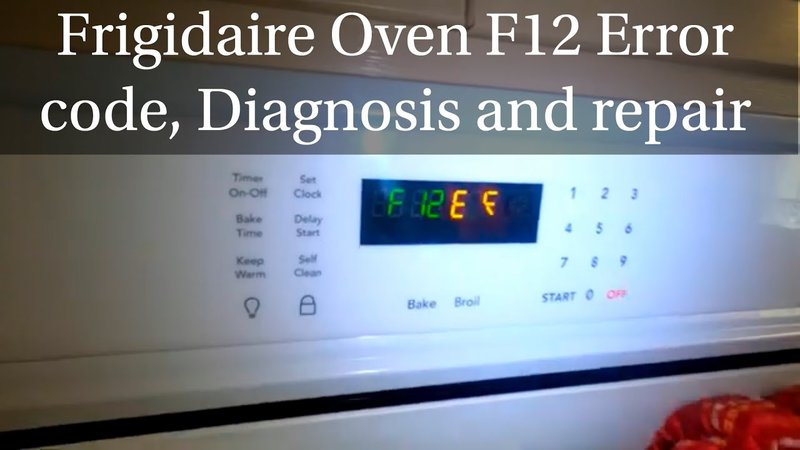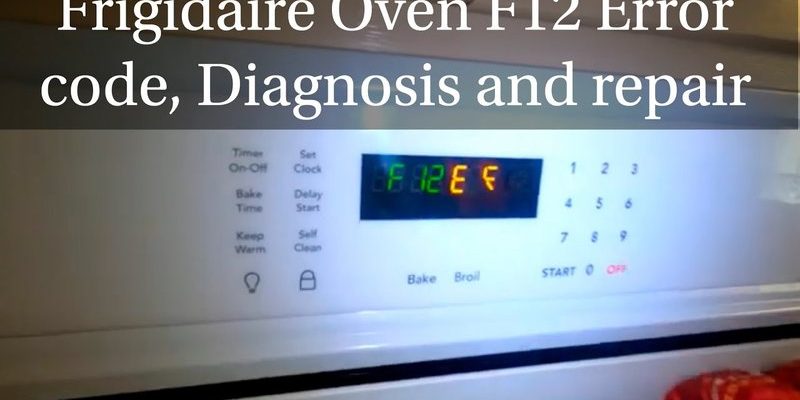
Here’s the deal: error codes are like your appliance’s way of waving a red flag. It’s telling you something’s not quite right. Specifically, Error Code LE on a Frigidaire oven usually signals a problem with a component related to the door lock system. This issue might sound a bit technical, but don’t worry. We’re here to break it down for you in simple terms. Ignoring the error might seem tempting, especially if the oven seems to work most of the time. But let’s find out why that might not be the best idea.
Understanding the Error Code LE
So, what exactly does Error Code LE mean? Imagine your oven door as a vault door in a bank. It’s crucial for safety and functionality. If the lock on that door is faulty, it might not close or open properly when you need it to. In your Frigidaire oven, Error Code LE is like an alert that the door lock—something that’s crucial during high heat operations like the self-cleaning cycle—isn’t working as it should. When the oven can’t confirm that the door is properly locked, it throws up this error to make sure you’re aware before starting any operation that requires locking, like self-cleaning.
The door lock system is important because it prevents the oven from being opened during potentially dangerous high heat cycles. If it’s not working, you could end up with a door that won’t open, or worse, an oven that doesn’t shut off properly when it’s supposed to. You might think, “I don’t even use the self-cleaning feature, so why should I care?” But even if you’re not using every feature of your oven, a malfunction in one area can affect overall performance and safety.
Next time you see this error code, think of it as your oven’s way of playing it safe. It’s better to address the problem rather than risking it escalating to something bigger and costlier. Ignoring it might seem more convenient today, but it could lead to a more severe issue down the line that requires professional repair.
Common Causes of Error Code LE
So why does this pesky code pop up in the first place? Just like a car that refuses to start, several factors can cause Error Code LE. Let’s review some of the usual suspects. One common cause is a *faulty door lock assembly*. Over time, like anything mechanical, the parts that make up the door lock can experience wear and tear. Imagine using a key that slowly grinds down until it doesn’t fit quite right anymore—that’s what can happen inside your oven.
Another culprit might be *issues with the control board*. Think of this as the brain of your oven. If the brain can’t communicate with the lock, everything goes haywire. You might have experienced something similar when your smartphone refuses to recognize your fingerprint even though you’ve registered it numerous times. Additionally, wiring problems, such as loose connections, can disrupt communication between the lock and control board, triggering the error.
Environmental factors can also play a role. For instance, *moisture buildup* can affect electrical components over time. If you’ve ever had a device that suddenly stopped working after getting a bit wet, you’ll understand how sensitive these components can be. A mix of humidity and steam from cooking can gradually impact the oven’s internal parts, leading to the appearance of Error Code LE.
Addressing the Error Code LE
Now that we know why this error might occur, the question is, how do you fix it? Thankfully, some steps can be taken to address and potentially resolve the issue. First, conduct a simple *reset*. Sometimes, just turning the oven off and on again can clear minor glitches, much like rebooting your computer to fix a frozen screen. Turn off the oven at the breaker, wait a few minutes, and then turn it back on to see if the error persists.
If the error doesn’t clear, it might be time to *inspect the door lock*. Make sure there’s no visible obstruction or damage to the locking mechanism. If the lock seems loose or the door doesn’t latch properly, it might need replacing. In some cases, professional repair might be required, particularly if the control board needs checking or replacing. While it might feel daunting, remember that fixing it sooner rather than later can prevent bigger headaches.
Finally, consider the more technical aspects, like checking for *loose wires* if you feel comfortable doing so. This step is trickier and might require the help of a professional technician. They have the tools and expertise to safely diagnose and fix wiring issues.
Why You Shouldn’t Ignore Error Code LE
Ignoring error codes might be tempting, especially if you’re in the middle of preparing a meal or hosting guests. But here’s why you should pay attention to Error Code LE on your Frigidaire oven: safety and functionality are at stake. An oven that doesn’t operate properly can lead to undercooked meals or even pose a hazard if the lock mechanism fails during operation. Just like ignoring a “check engine” light could lead to car trouble, disregarding this error could escalate into more serious issues.
Moreover, addressing the problem sooner can save you time and money. Small repairs now can prevent expensive overhauls later. Imagine a small leak in your bathroom—a quick fix can save you from having to replace an entire floor due to water damage. The same principle applies here. Proper maintenance and prompt attention to error codes extend your oven’s life.
To stay proactive, it’s also a good idea to familiarize yourself with your oven’s manual and maintain regular cleaning and inspections. It’s always better to catch potential issues early before they snowball into significant failures. Regular care and attentiveness ensure that your oven remains a trusty kitchen companion for years to come.
In summary, while it might be tempting to ignore Error Code LE, the best course of action is to investigate, understand, and address the issue. This not only keeps your cooking adventures seamless but also ensures kitchen safety, peace of mind, and extends the longevity of your appliance.
